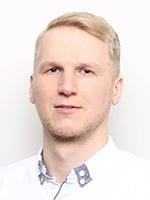Keynotes - SUSHP 2023
Keynotes and plenary speakers
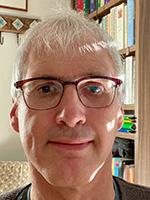
Dr. Wouter van de Bund
European Commision, Joint Research Center, Ocean and Water Unit
Co-chair of WG ECOSTAT (CIS-WFD)
More about Dr. van de Bund on Researchgate
Opening plenary, Tuesday 13 June (10:00–11:15)
View program Tuesday
Hydropower and EU policy on water management, biodiversity, and climate adaptation
Hydropower provides an important contribution to renewable energy but can also cause considerable environmental damage to river ecosystems. Compromises balancing the objectives of renewable energy and water policies are often unavoidable. In the EU Water Framework Directive this is reflected in the concept of Good Ecological Potential, allowing hydropower dams and other physical structures if they are part of the solution that causes the least environmental damage, and if that damage is mitigated as much as possible. The same principles are applied in the 'do no significant harm' criteria of the EU Taxonomy for Sustainable Activities.
For the application of this approach it is crucial to apply it at different scales, locally to justify the need for specific projects and to demonstrate the application of mitigation measures, but also at national and even European scale to demonstrate that hydropower solutions are planned in such a way that they minimise environmental damage.
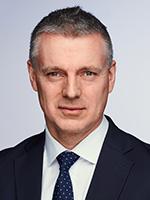
Kjetil Lund
Director General, Norwegian Water Resources and Energy Directorate (NVE)
Opening plenary, Tuesday 13 June (10:00–11:15)
View program Tuesday
Social economist educated at the University of Bergen. Kjetil Lund has extensive experience with energy and climate issues from various roles in the civil service and politics. Before Lund took over as director of NVE, he was city councilor for industry and ownership in Oslo municipality.
The role of hydropower in the green shift
description coming soon
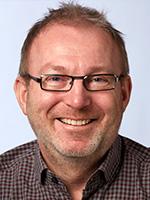
Anders Iversen
National Water Coordinator at the Norwegian Environment Agency (NEA). Represents Norway in the WFD Strategic Coordination Group (SCG), OECD Water Governance Initiative (WGI), and European Centre for River Restoration (ECRR).
More about Anders Iversen
Opening plenary, Tuesday 13 June (10:00–11:15)
View program Tuesday
Plenary 5 continued, Thursday 15 June (10:50–13:00)
View program Thursday
Welcome address, setting the scene - Striking the right balance between hydropower and ecology
In this talk, Anders Iversen will focus on:
- Welcome to Norway, Trondheim and this Conference - hosted by some of the leading research institutions in this field in Norway.
- Brief highlights from the history of balancing hydropower and ecology in Norway.
- The international framework with the Paris and Montreal-Kunming Agreements and balancing various Sustainable Development Goals.
- The European framework with the Renewable Energy Directive and Water Framework directive, the Green Deal Climate Action Plan and Biodiversity Strategy, and balancing the Taxonomy targets.
- Current national legislation, priorisation tools and ongoing processes in Norway.
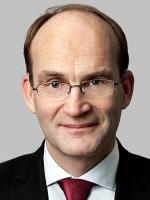
Jakob Granit
Director General Swedish Agency for Marine and Water Management (HaV)
More about Jakob Granit
Opening plenary, Tuesday 13 June (10:00–11:15)
View program Tuesday
Plenary 5 continued, Thursday 15 June (10:50–13:00)
View program Thursday
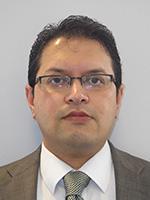
Mr. Pravin Karki
Hydropower
More about Pravin Karki on Researchgate
Opening plenary, Tuesday 13 June (10:00–12:30)
View program Tuesday
The Role of Hydropower in Clean Energy Transition: A World Bank Perspective on Environmental and Social Standards (ESS).
Sustainably developed hydropower is expected to remain a mainstay technology for achieving universal access to energy and facilitating clean energy transition. IEA’s Net Zero Scenario estimated that at least 1300 GW of new hydropower capacity, double the existing capacity, would need to be added by 2050 in order to decarbonize the energy sector while achieving universal access. In addition to this, existing hydropower infrastructure needs rehabilitation and upgrading. Hydropower plays an important role in meeting the World Bank’s corporate commitments. The Climate Change Action Plan for 2021-25 highlights that the World Bank Group (WBG) will refocus on hydropower as a clean energy technology that can support the integration of large amounts of wind and solar power into country and regional power systems. Hydropower projects contribute to the Bank’s commitment to accelerate the deployment of renewable energy and scale up climate finance.
The Bank’s experience indicates that the sustainable development of complex hydropower projects with implementation responsibilities spread among multiple stakeholders can benefit significantly from early engagement on environmental and social issues. Benefit sharing mechanisms are also important for the sustainable development of hydropower, and the Bank has extensive experience in helping client countries design and implement them based on the Bank’s ten environmental and social standards.
In this presentation you will hear of case studies on how the World Bank prepares projects based on these standards.
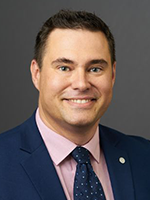
Pablo Valverde
Deputy CEO,International Hydropower Association (IHA)
More about Pablo Valverde
Opening plenary (continued), Tuesday 13 June (11:30–13:00)
View program Tuesday
Going forward, the only acceptable hydropower is sustainable hydropower – a bold statement, but can it be followed up with action?
In this talk Pablo Valverde will focus on:
- Climate, biodiversity and water crises – can sustainable hydropower help?
- Lessons learned and what other renewables can learn from hydropower’s experience
- From best practices to a global standard for sustainability
- Tackling the climate crisis with certifiably sustainable hydropower
- A new pathway for hydropower
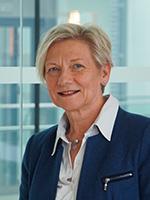
Anne C. Bolle
Vice President EU Affairs, Statkraft
Opening plenary (continued), Tuesday 13 June (11:30–13:00)
View program Tuesday
EU Hydropower balances targets for climate and environment
Anne C. Bolle is Economist educated at the University of Oslo and has extensive experience in energy and climate issues from various roles in the private and public sector. She is now Vice President EU Affairs in Statkraft and has been leading Statkraft’s EU office since 2018. She has chaired eurelectric’s Working Group Climate Change &Decarbonization for six years and is currently Renewable Norway’s representative in eurelectric’s Generation & Environment Committee.

Dr. Brenda Pracheil
Fisheries Biologist, Pacific Northwest National Laboratory (PNNL)
Governing Board Chair, Low Impact Hydropower Institute
More about Dr. Brenda Pracheil
Plenary 2, Tuesday 13 June (13:30–15:30)
View program Tuesday
An Overview of Environmentally Sustainable Hydropower in the United States Viewed Through the Lens of EU Taxonomy for Sustainable Activities
This talk will provide an overview of US hydropower regulation including current trends and future forecasts of how environmental impacts of hydropower are being assessed and mitigated in the US and how these solutions map to the EU Taxonomy for Sustainable Activities. The United States has regulatory requirements explicitly addressing Taxonomy objectives on the sustainable use and protection of water, pollution prevention and control, and protection and restoration of biodiversity and ecosystems but does not yet name climate change mitigation or adaptation and transition to a circular economy as in regulatory requirements. However, voluntary participation in meeting enhanced environmental standards that are driven by market incentives in some areas may help some US facilities address additional objectives. Hydropower regulation in the United States is driven by individuals and governmental and non-governmental organizations that provide input on what and how environmental impacts should be assessed and mitigated. Participants in the regulatory process are beginning to drive US regulations closer to meeting EU Taxonomy objectives, particularly those related to climate change.
Gisela Ofenböck
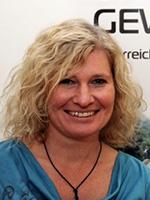
Federal Ministry of Agriculture, Forestry, Regions and Water Management
Vienna, Austria
Plenary 2, Tuesday 13 June (13:30–15:30)
View program Tuesday
Approaches for Sustainable Hydropower use in Austria
Abstract: In Austria, hydropower forms the backbone of the electricity supply with a share of over 60%. It is planned to further increase this share through expansion and efficiency improvements in order to achieve the climate targets and increase energy independence.
However, the storage and run-of-river power plants cause ecological impacts. Many river sections are impaired by water abstraction, hydropeaking and impoundment. In addition, many weirs still represent barriers to fish migration. The ecological objectives of the Water Framework Directive are still not met in many water bodies. In order to ensure a sustainable use of hydropower, national regulations include green standards (mandatory mitigation measures, e.g. eflow, river continuity), instruments for strategic planning and funding conditions for hydropower development that are aligned with ecological requirements.
The tension between renewable energy production and functioning aquatic ecosystems reflect arguably two of the greatest challenges of our time: mitigating climate change and human-induced global species extinction. Resolving this conflict requires integrative approaches and close cooperation between authorities, industry and science. There is no alternative to working together and finding solutions immediately if we are to ensure the possibility of a good life for future generations. The need of the hour is to develop strategies and approaches that are shared by all so that they can be implemented quickly. It is also clear that simple solutions are often not possible for such complex problems. A scientifically supported adaptive approach is one way to deal with this.
One example of this is hydropeaking in Austria. In years of cooperation and countless intensive discussions, it was possible to jointly develop framework conditions that will soon be published in the form of a national guideline. The guide will contain the boundary conditions for a uniform water body-specific determination of suitable mitigation measures as well as the hydrological, morphological/hydraulic, energy-economic, fish and benthic-ecological bases for a uniform assessment of hydropeaking and monitoring.
The implementation and improvement of this guidance in the context of the EU Water Framework Directive will be the task of the next years. The first mitigation measures are already under construction.
Dr. Ana Adeva Bustos
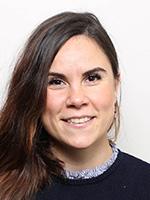
SINTEF Energy Research, Norway
Plenary 5, Thursday 15 June (09:00–10:30)
View program Thursday
IEA Hydro Annex on Hydropower and Fish: A Roadmap for Best Practice Management
IEA Hydro organize several initiatives that are dedicated to various aspects of hydropower use on a global scale. Annex XIII was established in 2013 to raise awareness of the harmful effects of hydropower on fish and to disseminate suitable mitigation measures. In the closing phase of the Annex the expert group, which is composed of specialists from America, Europe and Australia, worked closely to compile up-to-date knowledge and solutions for practitioners in a form of a Roadmap. The document concentrates on two-way migration of fish, but it also describes general challenges and solutions to other negative consequences regarding changing habitat conditions, sedimentation, water quality, and flow regime due to hydropower. As part of the Roadmap a simple decision support tool is developed to navigate the readers towards potential mitigation measures for the various challenges, that are aimed to enhance the sustainable use of hydropower. This new roadmap was published in April 2023, and is available for download here Hydropower and Fish - a Roadmap for Best Practice Management | Zenodo
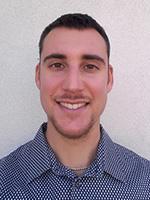
Dr. Emanuele Quaranta
European Commission Joint Research Centre, Italy.
More about Dr. Emanuele Quaranta
Plenary 5 continued, Thursday 15 June (10:50–13:00)
View program Thursday
Opportunities and challenges for sustainable hydropower in the European Union and in Europe
Hydropower provides an important contribution to renewable energy, with multiple benefits associated to water reservoirs. However, it can also cause considerable environmental damage to river ecosystems. Hence sustainable hydropower needs to achieve a good balance between electricity generation, impacts on ecosystems and benefits on society, supporting the achievement of the Green Deal targets and the objectives of renewable energy and water policies. Several sustainable hydropower options exist, whose potential is of high relevance especially in the European Union. Amongst others, these are: modernization of the existing hydropower fleet, hydropower integration and hybridization with other energy technologies (floating photovoltaics, heat extraction from generators, batteries), tapping hidden hydropower in water and wastewater distribution networks, hydropower in existing and non-removable barriers(e.g., water mills), reservoir interconnection and hydrokinetic turbines. Digitalization is also emerging as a relevant strategy to mitigate impacts along rivers and optimize hydropower generation taking into account weather, technical, market and environmental factors.


